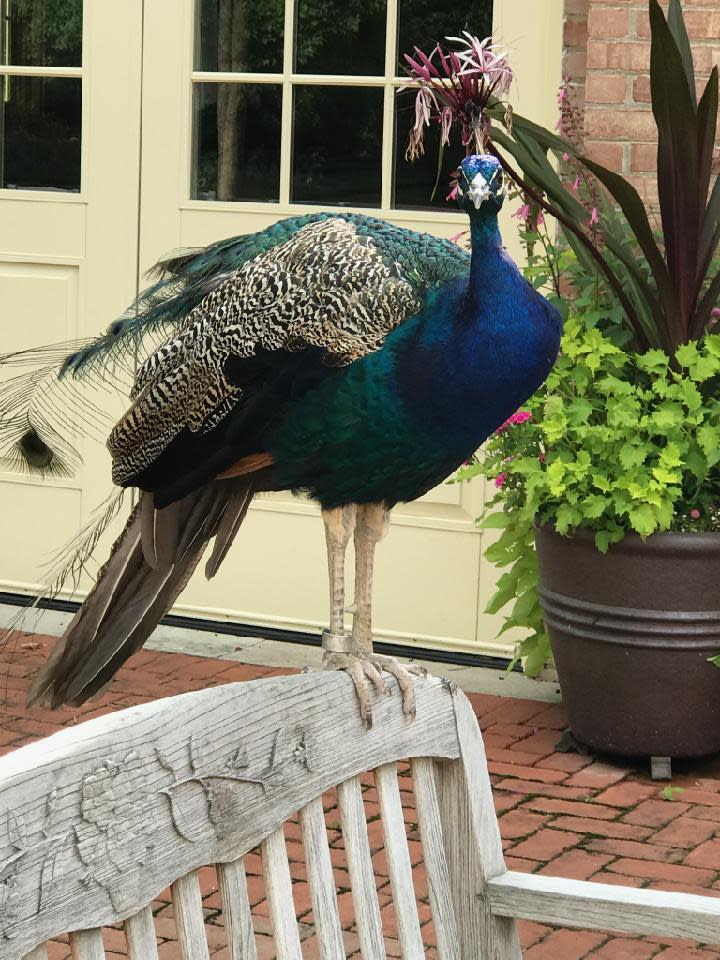Over the Garden Fence: The prideful peacock was once the cuisine of royalty
As your family plans for Christmas dinner progress, it is a sure bet that a peacock roast is not on the menu. Lest you think that my mind is totally gone, or that the holiday liquor-based drinks have torqued my mind, an old clipping in my Christmas file brought this comment. Yes, the column tells of the medieval practice of selecting peacock meat as a royal dish. Roasted peacock was a delicacy. As far back as Roman times, peacock meat was consumed by the wealthiest members of society.
To support the chefs out there, let me explain how the majestic bird was prepared. The skin was removed along with the the feathers and saved. All would be put to use later in preparations. Once cleaned the bird was filled with stuffing and seasoned with many spices. The peacock was positioned so its legs suggested it was still alive. Once roasted and partially cooled, the bird was "reclothed" in its skin; tail feathers were spread out gracefully.

The lovely display was not delivered into the hall by any servant. The highest ranking lady was given the honor of presenting the carefully prepared treat before the most honored guest. The court ladies followed behind her as musicians played a fanfare. Then each knight placed a hand upon the bird, giving a solemn oath to perform some worthy deed. One knight was chosen as carver. It is said that the meat was rather dry so plenty of gravy was served.
When you consider the ways peacocks have been used to adorn medieval manuscripts, churches and buildings it is amazing they could be eaten. Tombs and Roman catacombs where persecuted Christians were sheltered displayed peacocks. This imagery was said to provide a comforting reminder of eternity in this perilous period. Peacocks appeared in early Christian paintings and mosaics, too. Ancient Greeks believed that the peacock flesh did not decay after death.
Peacocks seem to have a history full of symbolism in cultures all over the world. Much of it is based on its looks. Because it struts with head up high, it is thought of as prideful, full of vanity. It has an appearance of exotic beauty associated with luxury, power and good fortune.
It is used in totems out of a belief that it guided a person with a guardian spirit. The Celtics, knowing of the shed feathers being regrown, saw the peacock as a symbol of rebirth. Letting go of the past to start anew became an interpretation.
There are many Christian applications. As a spirit animal, peacocks support a man's effort to remain true to himself, stay steady in the face of adversity and embrace change with confidence and grace.
We can enjoy the majesty as we visit Kingwood Center Gardens where peacocks roam with eye-catching behavior. Hold on to hope. Remember this peacock information and symbolism. Do not change the menu for Christmas dinner.
Mary Lee Minor is a member of the Earth, Wind and Flowers Garden Club, an accredited master gardener, a flower show judge for the Ohio Association of Garden Clubs and a former sixth grade teacher.
This article originally appeared on Bucyrus Telegraph-Forum: The medieval practice of serving peacock meat at Christmas

